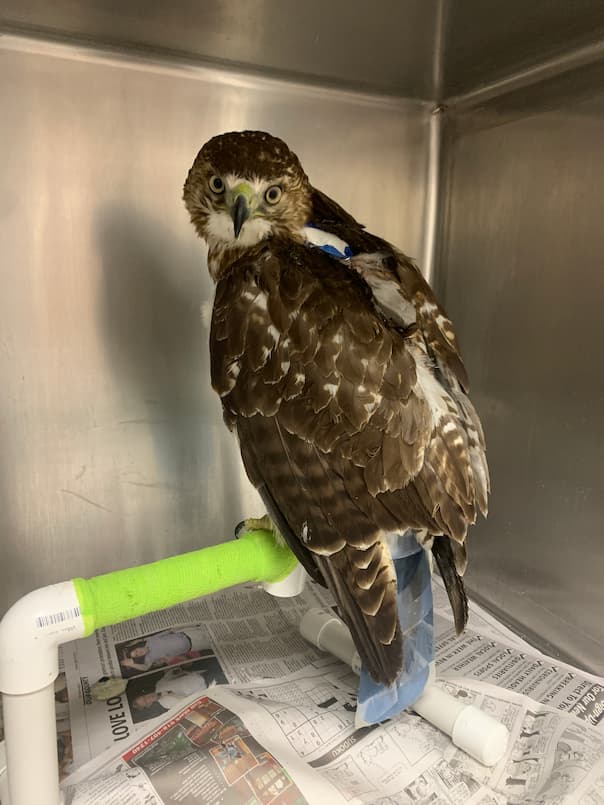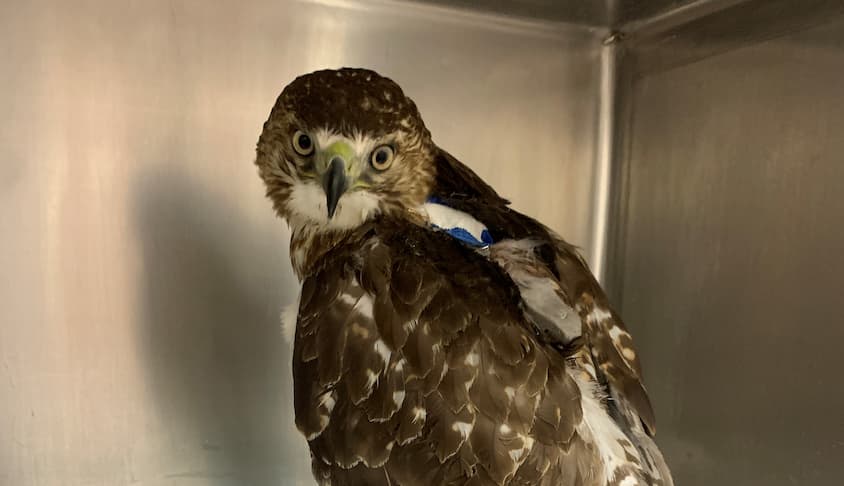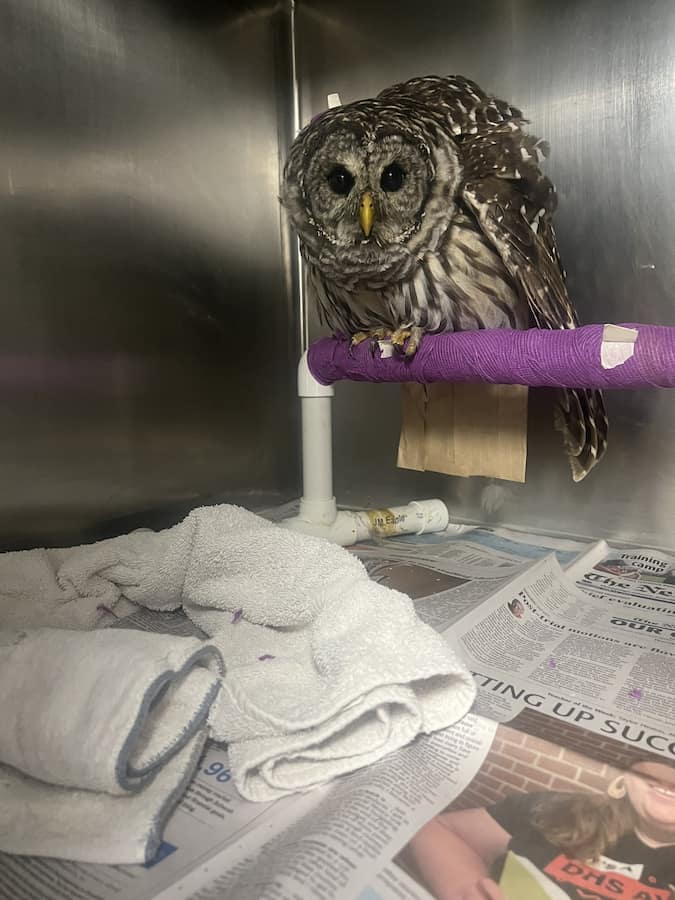Red-tailed hawks (Buteo jamaicensis) are one of the most common hawks in North America, with a range that spans from Alaska to the tropical rainforests of Central America. You can often find them perching on fences and telephone poles, surveying their territory. While you may not have heard their calls in real life, you’ve definitely heard them in a movie theater. The call of a red-tailed hawk is the standard sound effect for most birds of prey in movies, especially bald eagles.
Here in Illinois, red-tailed hawks are year-round residents, choosing to stay put once winter comes. Back in January of 2023, an adult red-tailed hawk was brought to the clinic by a good Samaritan after being found on the side of a road in Champaign. The finder was able to catch and carry the hawk by wrapping it in a towel they had found on the road next to it. After bringing the hawk to the clinic, we were able to perform a triage exam. The hawk was dull and squinting, signs that can point to pain. We placed a raptor hood, a useful tool that covers a hawk’s eyes, calming them down to allow us to safely perform a thorough exam. This helped reduce his stress while we continued our exam, feeling the joints and bones of the wings and legs. The hawk’s right wing had an ulnar fracture, and several wounds were found. Additionally, we were able to feel bony changes on the left leg, indicating that the femur of the leg had fractured previously and was healing.

To get a better look at the bony changes we had felt in the right wing and left leg, we took radiographs of the hawk. The radiographs confirmed the ulnar fracture, also revealing that it had multiple bone fragments instead of a simple, clean break. The femur of the left leg was fractured in two locations but had since rejoined together and was healing well. The leg fracture was approximately a month older than the wing fracture, meaning this hawk had experienced two traumatic events in a short period of time and still had a zest for life!
Passive range of motion, often abbreviated as PROM, is a form of physical therapy in avian patients in which the wing is gently and repeatedly stretched to its normal limits while the patient is anesthetized. The angles for the maximum extension of the elbow and wrist are measured before and after performing PROM, allowing us to track how well the patient can spread their wings. Birds need a very specific range of motion to fly effectively, so it is important to maintain that range of motion after an orthopedic injury like this hawk had experienced. Regular PROM also provides the students working in the clinic plenty of opportunities to practice valuable veterinary skills such as anesthesia monitoring and placing wing wraps.
Over the course of eight weeks, we were able to see steady improvement in this patient. The final radiographic examination revealed that the various pieces of bone had bridged, and the wing was stable. This hawk was finally cleared for transfer to a rehabber, allowing it time to practice and improve its flying skills again before being released to the wild.
Written by Tyson, Class of 2026




